Cerebral Palsy from the POV of Allied Health Professionals
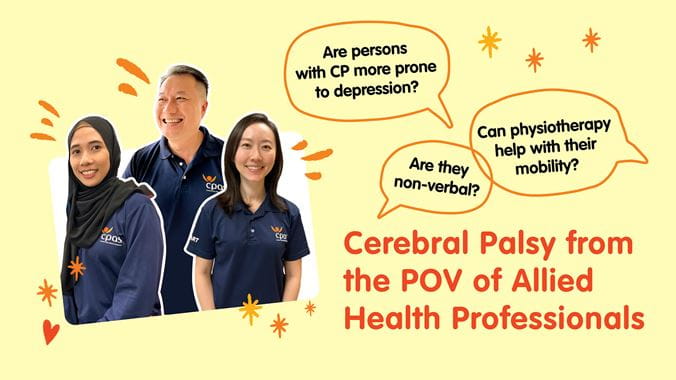
Article
Cerebral Palsy from the POV of Allied Health Professionals
Cerebral Palsy (CP) is a neurological disorder that affects movement, coordination, and speech. It is caused by brain damage that occurs before, during, or shortly after birth. While there's no cure, early diagnosis and intervention can significantly improve quality of life.
Allied Health Professionals play a crucial role in supporting individuals with CP. They work together to address the various needs of these individuals. This World Cerebral Palsy Month 2024, let us shed light on this complex condition and explore the challenges and stories of those living with it through the lens of the Allied Health Professionals from Cerebral Palsy Alliance Singapore (CPAS).
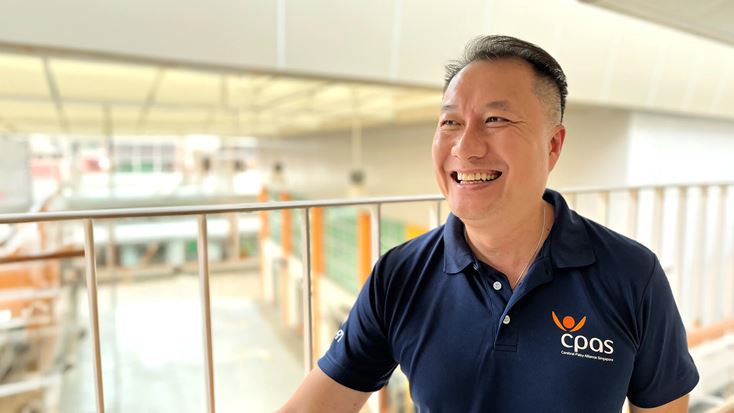
Christopher: Research (McMahon et al., 2020) suggests that children and adolescents with CP are more likely to experience anxiety compared to their peers without the condition. This increased risk can be attributed to several factors:
- Brain injury: The brain damage that causes CP can impact a child's ability to adapt to new situations and manage stress effectively.
- Social isolation: Difficulty in making friends due to low self-esteem and shame about their physical limitations can lead to social withdrawal and feelings of loneliness.
These factors can contribute to the development of mental health issues, such as anxiety, depression, and emotional outbursts.
How do you help CP clients address these mental health issues?
Christopher: We teach these children emotional regulation skills and problem-solving techniques to manage stress and deal with uncertain situations. In addition, we conduct social-emotional interventions to help improve the relational outcomes of these children. For example, we use social stories, therapeutic play, and art therapy to support the development of the child’s self-esteem and reduce the detrimental effects of shame.
“We can help individuals with cerebral palsy build and maintain a positive self-esteem by providing words of affirmation and encouragement to the child when they put effort into the work they do. Treating them with respect by modelling and allowing them to perform tasks independently. Focus on the child’s effort, not on the outcome.”
Christopher: One of my clients, Daniel (not his real name), was an 11-year-old boy who struggled with emotional regulation and conflict with classmates. When frustrated, Daniel's anger would quickly escalate into verbal outbursts.
To address these challenges, we conducted bi-weekly intervention sessions. During these sessions, Daniel used drawing to express his feelings and learned about different emotions and their associated body signals. We also taught him prevention strategies through modeling and simple instructions.
With consistent practice and support from his class teacher, Daniel made significant progress. He is now able to identify his bodily sensations and apply preventive strategies to regulate his emotions before they escalate. While there is still room for growth, Daniel's progress demonstrates the effectiveness of our therapeutic approach.
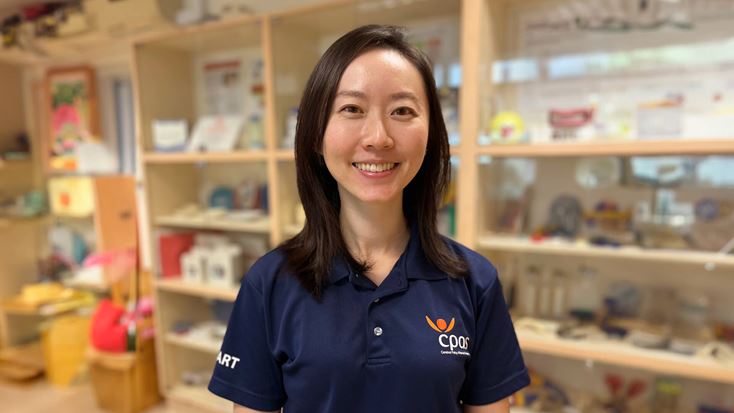
Yvette: Individuals with cerebral palsy (CP) may struggle to control the muscles involved in speech, such as in their head, face, neck and throat, leading to difficulties with clarity and pronunciation. Additionally, some individuals with CP may face challenges in understanding and using language. To address these issues, we provide speech and language therapy and introduce Augmentative and Alternative Communication (AAC) to supplement natural speech. Furthermore, speech therapists assess and manage feeding and swallowing difficulties, which are often associated with muscular challenges in individuals with CP.
How does cerebral palsy affect a person's communication skills?
Yvette: The impact of CP on communication skills varies depending on the individual. Some clients may be non-verbal, with limited understanding and use of language. They face significant challenges in making sense of the world, and have trouble communicating their needs and wants. They need a lot of support to learn to use communication systems, such as natural gestures or use of picture communication symbols, otherwise they cannot fulfil higher communication needs such as sharing their thoughts and feelings, talking about past or future events and communicating about topics of interest.
Among our verbal clients, the language abilities also vary depending on the type of CP they have. In general, their speech may be slow and slurred; their voices may be breathy, strained or rough. Thus, people with CP who are verbal may still face difficulties in conversation, as communication partners may not understand what they say.
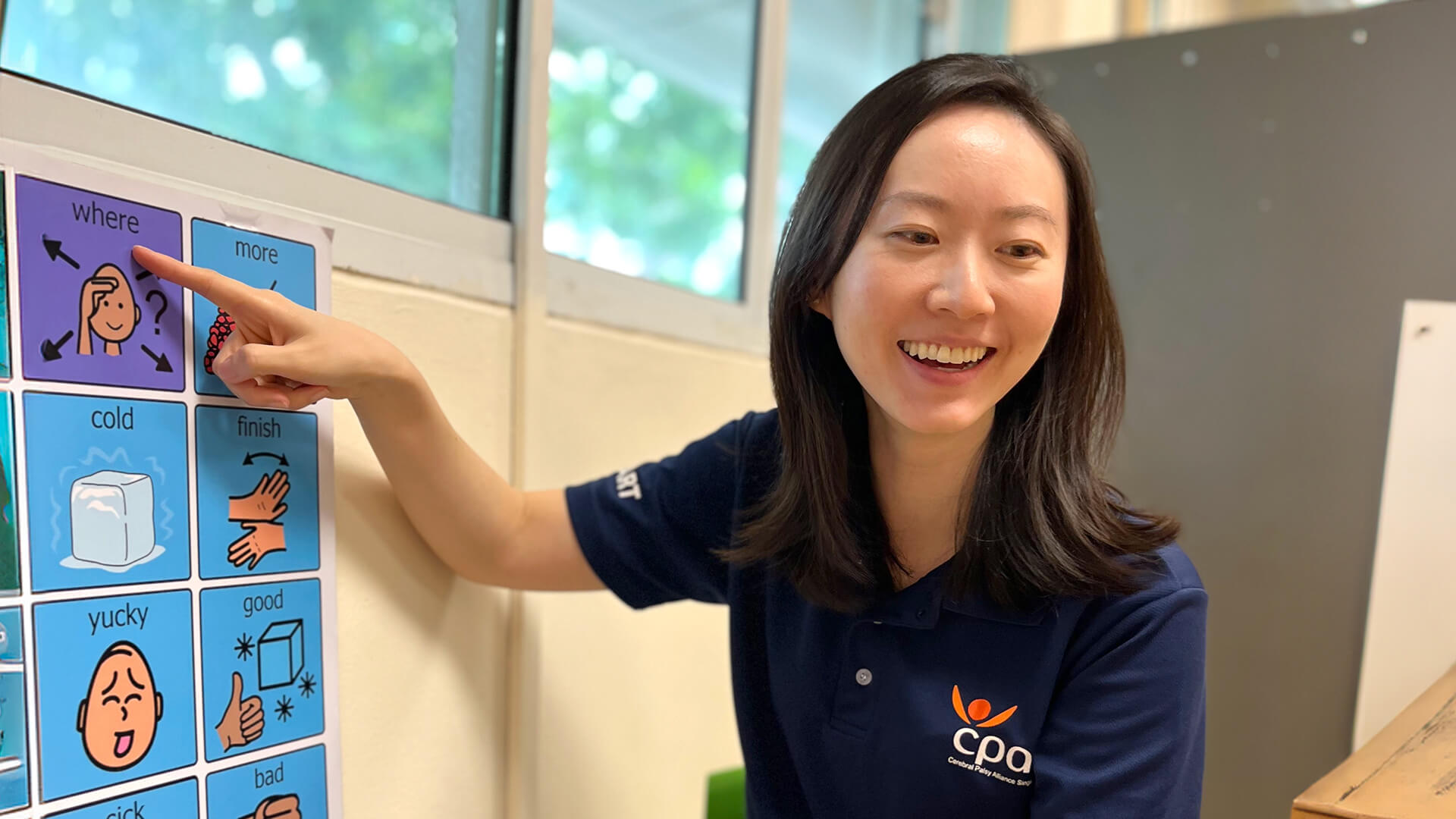
How can assistive technology be used to support speech and language development in individuals with cerebral palsy?
Yvette: Assistive technology, such as AAC systems, can significantly benefit individuals with CP. These systems provide access to a wider range of vocabulary, allowing for more complex communication. They can also be customised to meet individual needs and accessed through various methods, such as switches or eye gaze.
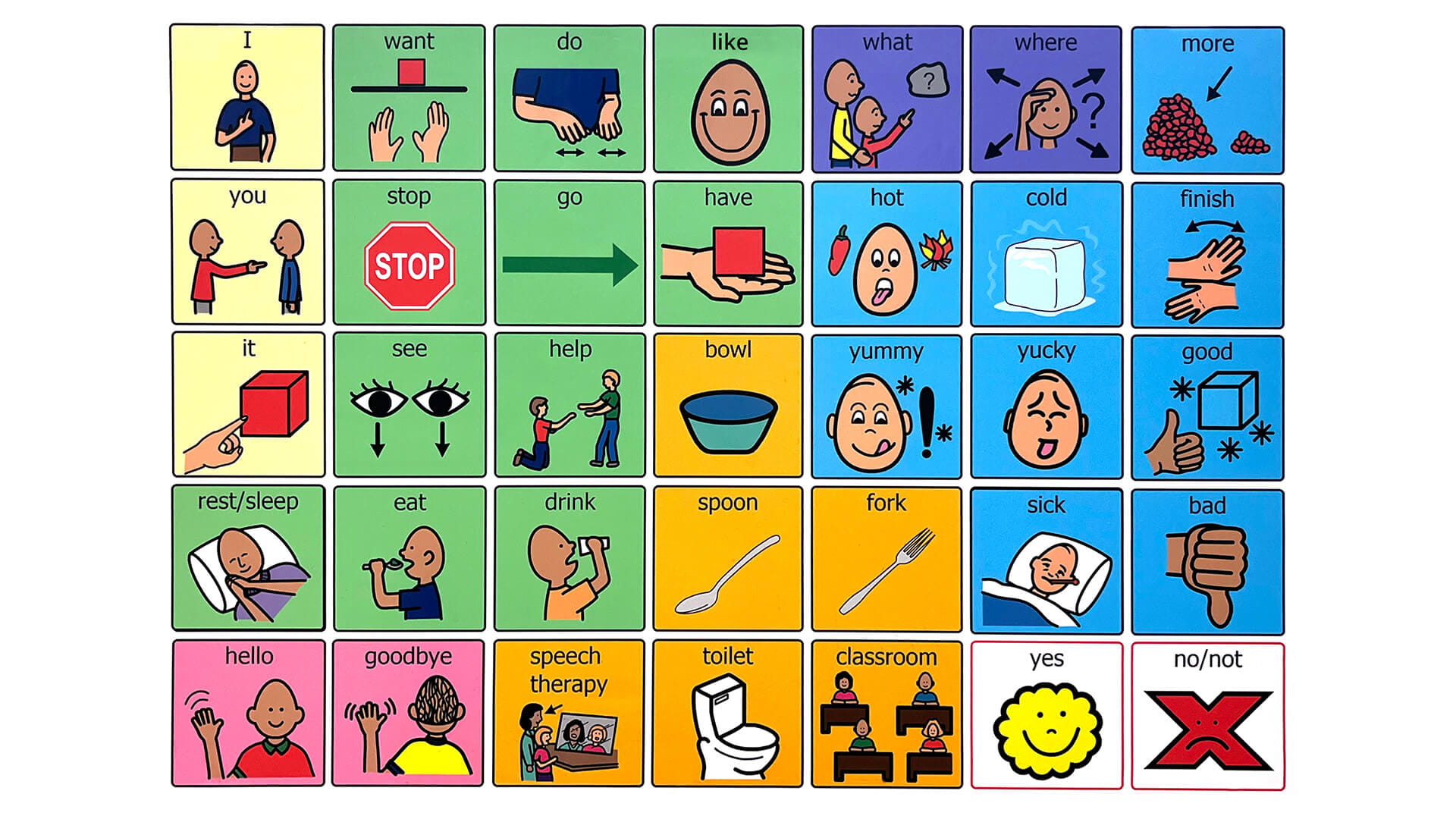
What are the long-term outcomes for speech and language therapy in individuals with CP?
Yvette: Our ideal goal is for individuals with CP to be able to communicate effectively and express themselves freely. While this may not be possible for all, we strive to help them achieve functional communication, which involves expressing daily needs and preferences.
It is extremely rewarding to witness non-verbal clients who found their voices through the use of AAC - before they were introduced to AAC they may have no means of telling us what they want, but after using AAC, some clients manage to form sentences to describe, comment and share their thoughts.
“It is not an exaggeration to say that every client whom I have worked with has left an impact on me. As their therapist, I may be teaching them how to communicate but they are often teaching me so much more. I learn from their resilience, patience and zest for life. Working with these clients and seeing them grow day by day is what keeps me going.
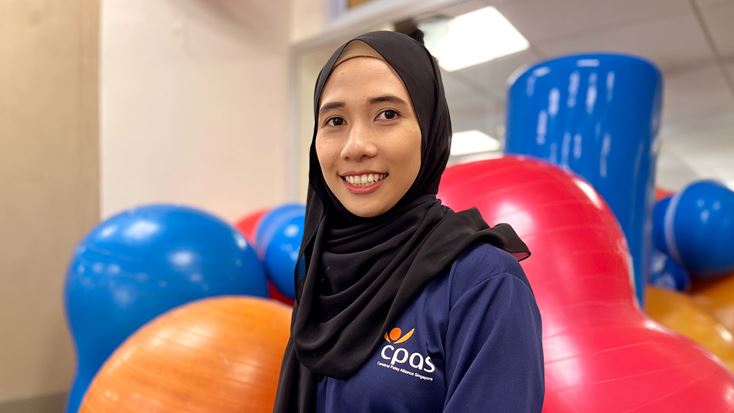
Irdayu: As physiotherapists, we employ a variety of techniques and equipment to support individuals with CP, including:
- Manual techniques: Facilitate movement patterns, sometimes with the use of therapy equipment such as therapy balls, wedges, therapy bolster and postural benches.
- Assistive devices: Prescribing standing and walking aids, as well as adaptive tricycles to strengthen muscles, enhance coordination and improve sitting balance.
- Technology: Utilising tools like to promote dual-task activities by stimulating cognitive function and promoting muscle activation.
- Advanced rehabilitation equipment: Employing equipment like the C-Mill to simulate real-world scenarios like road crossing and obstacle navigation, and DSTpro, a parallel bar designed for gait training.
By combining these approaches, we aim to optimise mobility, function, and independence for individuals with CP.
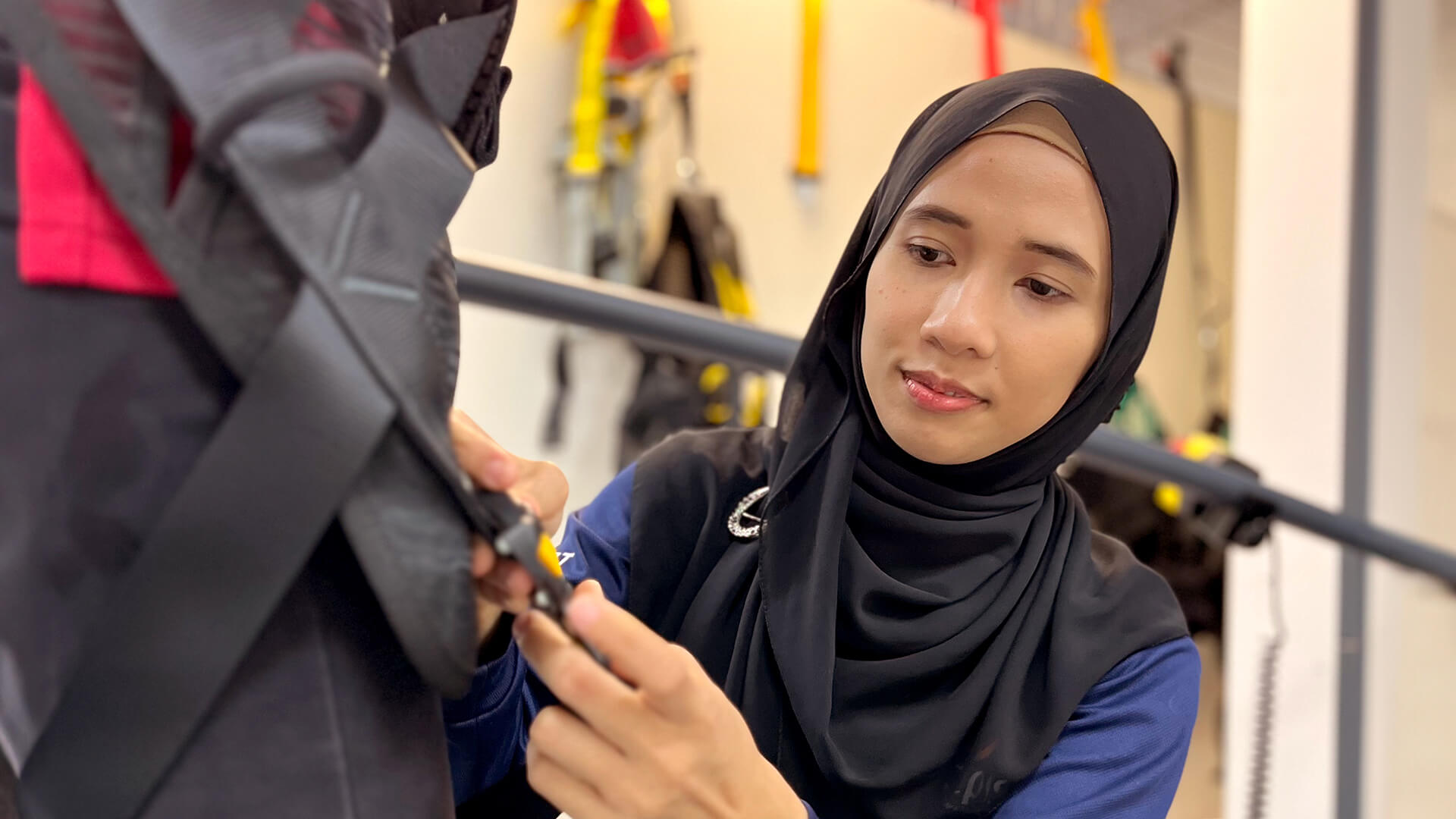
What are the long-term goals for persons with cerebral palsy in their gross motor function?
Irdayu: Our primary goal is to help individuals with CP achieve their maximum level of functional independence. For clients who can engage in activities with minimal assistance, we focus on fostering independence in mobility, transfers and daily living skills. For those who are fully dependent, our aim is to prevent the development of secondary impairments and preserve physical function.
By addressing these goals, we help individuals with CP improve their overall well-being and quality of life.
Irdayu: A 16-year old client, initially wheelchair-bound with low arousal and task avoidance, gradually engaged in physical activities. Over three years, he progressed from seated activities to standing and eventually walking with a posterior Kaye walker.
“This improvement enhanced his mobility and reduced caregiving strain, as he could assist with daily tasks like transfers. Witnessing his progress brought me great joy, and I was proud of his hard work and achievements.”
These dedicated Allied Health Professionals at CPAS offer comprehensive support to individuals with CP, addressing their physical, emotional and communication needs. By combining therapeutic interventions, assistive technology and personalised care, they empower individuals with CP to reach their full potential and enhance their quality of life .
Want to learn more about CP? Join our host, Katherine, as she spends a day at CPAS and explores the programmes and initiatives to support individuals with the condition.
You can also do a part to support CPAS by signing up to be a volunteer or making a donation here.

All donations are managed solely by the Cerebral Palsy Alliance Singapore (“CPAS”). For the avoidance of doubt, Link Property Management (Redwood) Private Limited, a private company incorporated in Singapore with limited liability and its affiliated entities (collectively the “Link Group”) is not a registered charity and is not involved in any fundraising, handling or management of donations to CPAS, nor shall the Link Group be held responsible or accountable in any way for any damage, loss or expense whatsoever, arising directly or indirectly from any (i) actions taken by you or any third party in reliance upon the contents of this video, or (ii) any inaccuracy, errors, misrepresentations, or omissions in the web page accessed via the QR code in this article. Interested parties should ascertain and satisfy themselves of the contents therein before making any donation.


 Download L Privileges app
Download L Privileges app










